2023 was a good golf year, to put it mildly.
For years, I’d done a pretty good job of playing at a bunch of new courses each year as I grew Breaking Eighty and my golf travel IQ.
Then COVID hit.
I didn’t get on an airplane for 21 months.
During that time I also had my first kid, which as you might guess, doesn’t lend itself well to travel.
Well, in 2023 I made up for lost time.
It started with 4 days at Bandon Dunes in January.
In February, I spent the month in Australia with my family playing courses that I legitimately never thought I’d get to play like Barnbougle Dunes and New South Wales. Not to mention half a dozen more I have yet to write about here on Breaking Eighty.
In May it was Paynes Valley.
June, Oakmont followed by Kohanaiki.
August brought rounds at Hualalai, Merion, Aronimink, Baltusol, Quaker Ridge, and Wykagyl.
But it was my first round in September that was the one I’d been waiting a decade to play:
Friar’s Head.
I’ve listed Bandon Trails among my top 10 favorite courses for years.
Coore and Crenshaw have worked on some really special projects.
But the mystique around Friar’s Head has always intrigued me.
Insane views on Long Island?
Extremely exclusive, small membership – with an initiation fee most of us couldn’t ever fathom?
And that’s all completely ignoring the fact that it’s routinely listed among the top 25 courses in the World.
It’s the ultimate golf day, and one that, unfortunately, most golfers will never get to play.
Somehow I won the lottery and last Summer got to spend a day at Friar’s Head.
I’ve played a lot of really special golf courses and had some unbelievable golf days.
My day at Friar’s Head was one of the top 3 golf days of my life.
Let me tell you about it.
Getting to Friar’s Head
I’ve traveled a fair amount within the Pacific Northwest with my friend Jeff, but we’d never taken a golf trip.
So after years of talking about it, I finally convinced him to come to New York with me.
We went all out, playing all of the aforementioned courses across Philly and the NYC area.
But the night before Friar’s Head, which was our last round of the trip, was the only night we stayed in Manhattan.
I splurged and got us a room at the Park Hyatt, and told him I was taking him on the cocktail tour of his life. It started at the #2 bar in the world, Double Chicken Please. It ended at the Dead Rabbit, the former #1 bar in the world, and there 7 world-class bars in between.
Our tee time wasn’t until 1, we’d be fine, right?
The hangover was bad, but it was the traffic jam getting out of Manhattan that caused the biggest headache.
1 hour to go 4 blocks.
If we missed this tee time, I’d never forgive myself.
Fortunately, once we got out of the city the Long Island Expressway traffic was fairly light and we pulled onto 3000 Sound Avenue about 30 minutes before our tee time.
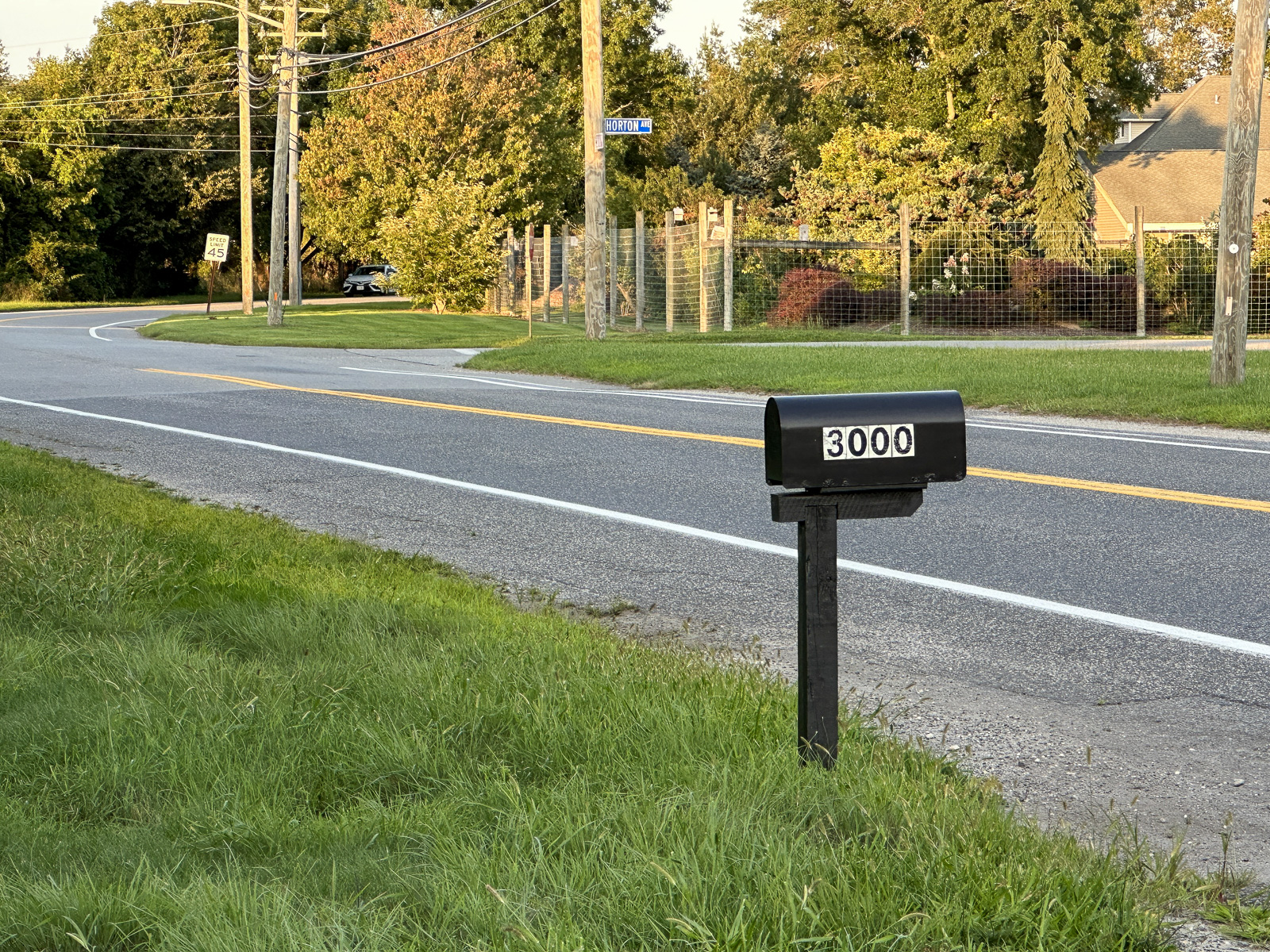
We were escorted to the wonderful range and practice area, where we hit a few quick balls (Pro V1s, of course) before heading back towards the first tee where we met the members who were hosting us.
They were friends of a friend who (very) generously agreed to have us out. It took all of about half a hole to realize just how welcoming they were – and honestly, this is really what made the day so special.
The Front 9 at Friar’s Head
Despite being so excited to play this course, I didn’t know that much about it.
I purposefully refrained from doing much research ahead of time.
I’d also heard stories about how strict they were about taking photos on the course. Not wanting to make an awkward ask of the people hosting us, I left my camera in the car.
Big mistake, considering it was a chamber of commerce day and they said the photo policy has been loosened quite a bit over the years.
So here, you get iPhone photos 🙂
The opening tee shot isn’t overly challenging with a big wide fairway. But then the approach is to a severely elevated, deep green. It doesn’t take long to figure out you should trust your caddie with, well, everything.
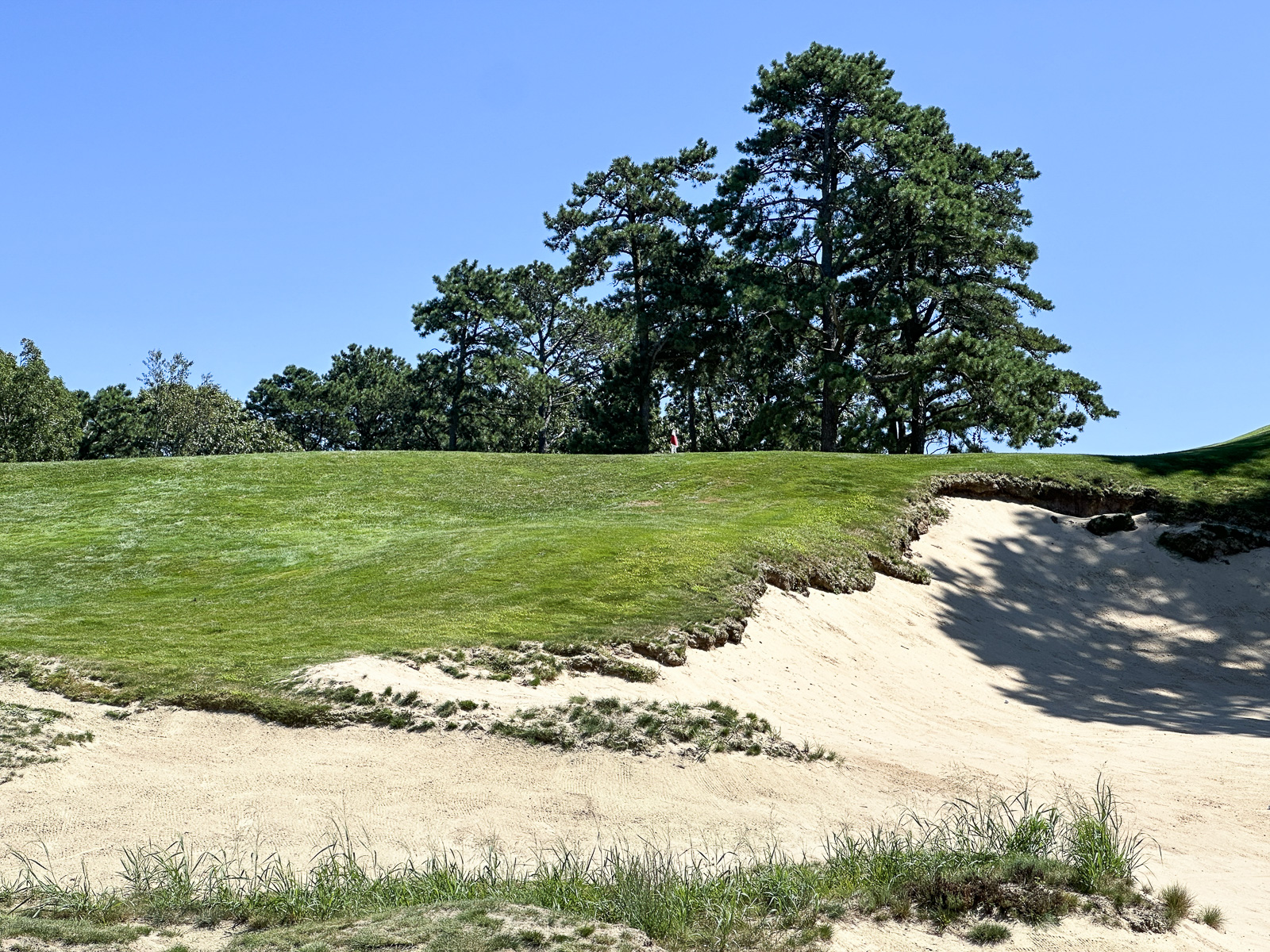
The opening on the Kings Course at Gleneagles is the most similar opening hole I’ve seen. The approach also has vibes of the approach on the first hole at Bandon Dunes.
There are a lot of impressive viewpoints around the course. Simply looking back at the clubhouse from the first green is one of them.
The second tee shot is the next. An elevated tee shot that plays downhill and gives a great view of the front 9.
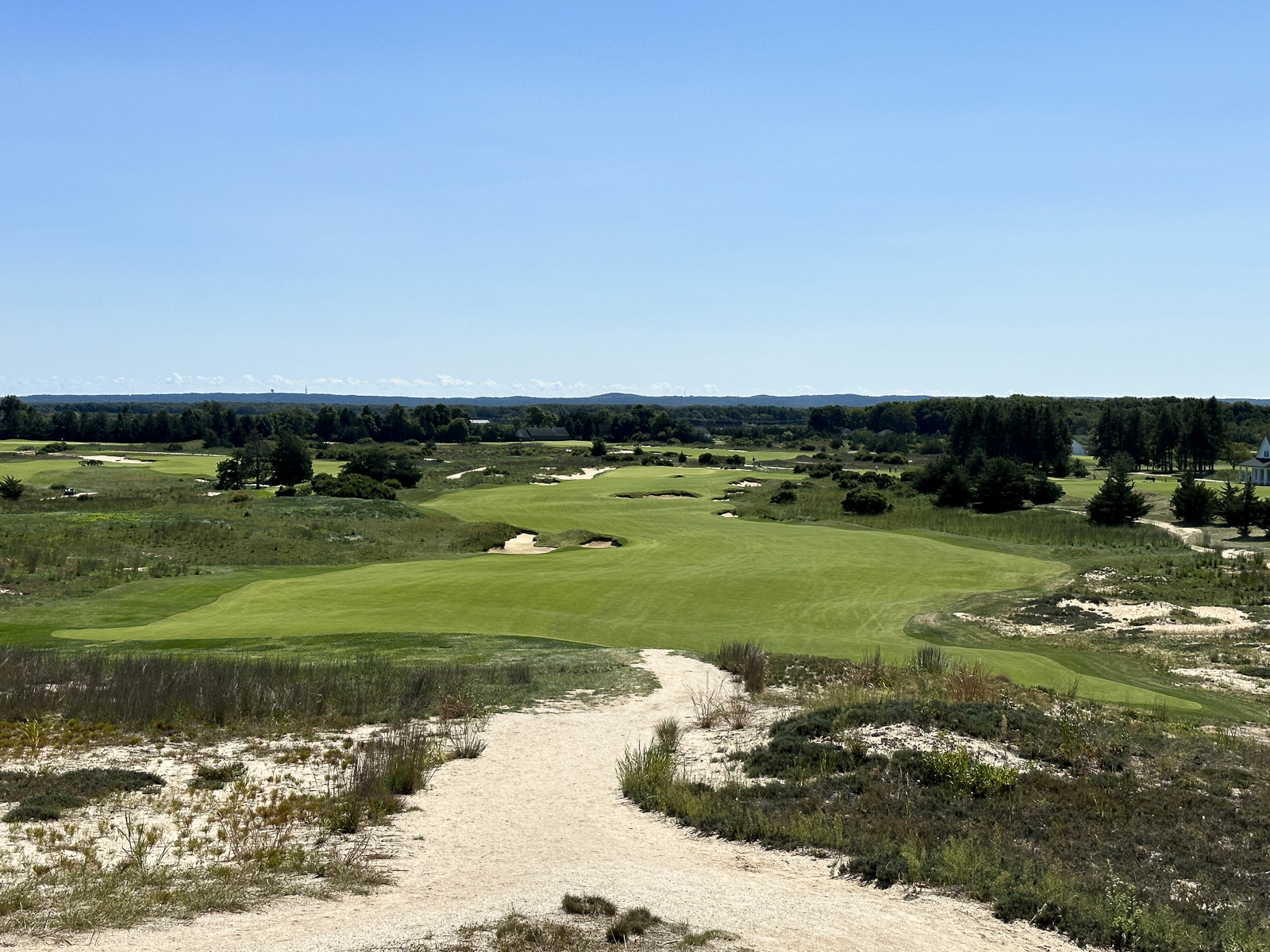
The two 9s each roughly form circles is a bit of aa figure 8 routing. The back 9 plays counterclockwise on one part of the property, and then when you hit 10 it plays (mostly) clockwise around a separate part of the property – with a finishing stretch near the Long Island Sound.
The 5th is one of the great short par 4s in golf, measuring around 300 yards. There are no yardages on the scorecard, so you end up playing holes from a variety of fun distances.
It’s also welcome after the monster par 3, 4th.
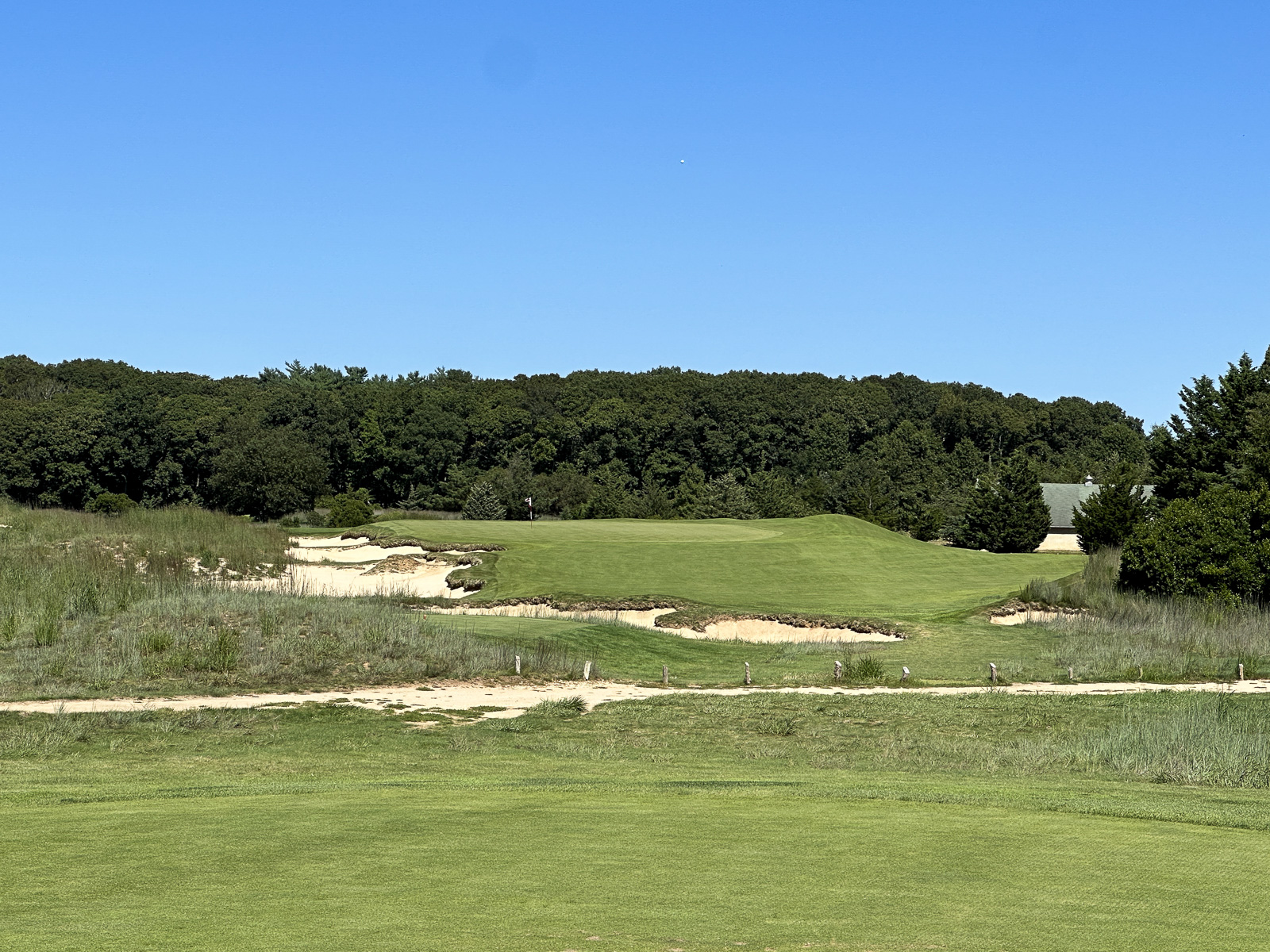
That said, short doesn’t mean “easy”. As if you don’t strike your drive well you could easily find yourself in a gnarly bunker to the right of the green.
And if you do strike it well, there’s another bunker right in the middle of your ideal line that could also swallow your ball.
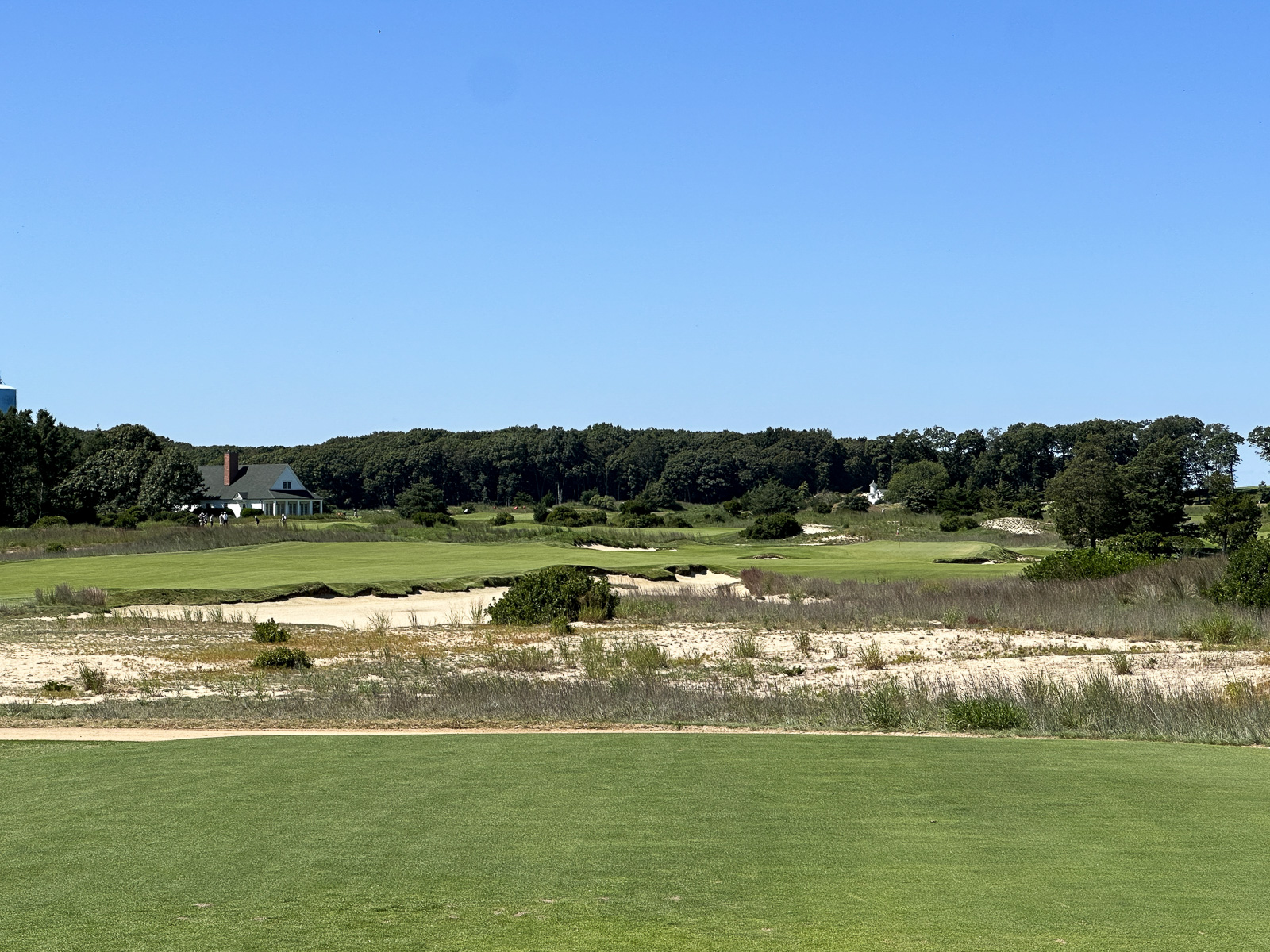
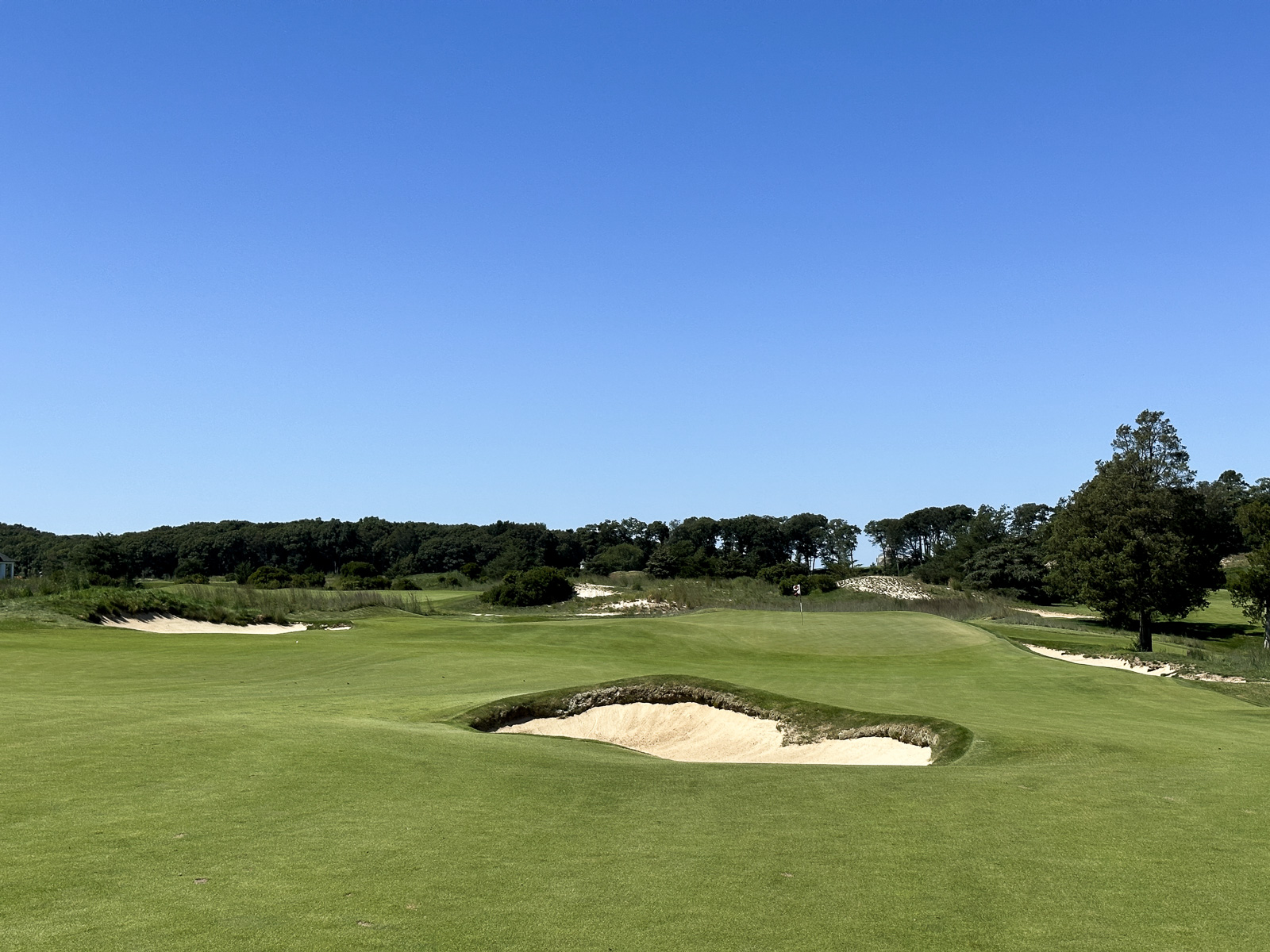
The par 5, 7th is a standout hole. A wonderful uphill par 5 that brings you back into the dunes and is one of the more visually stunning holes on the front.
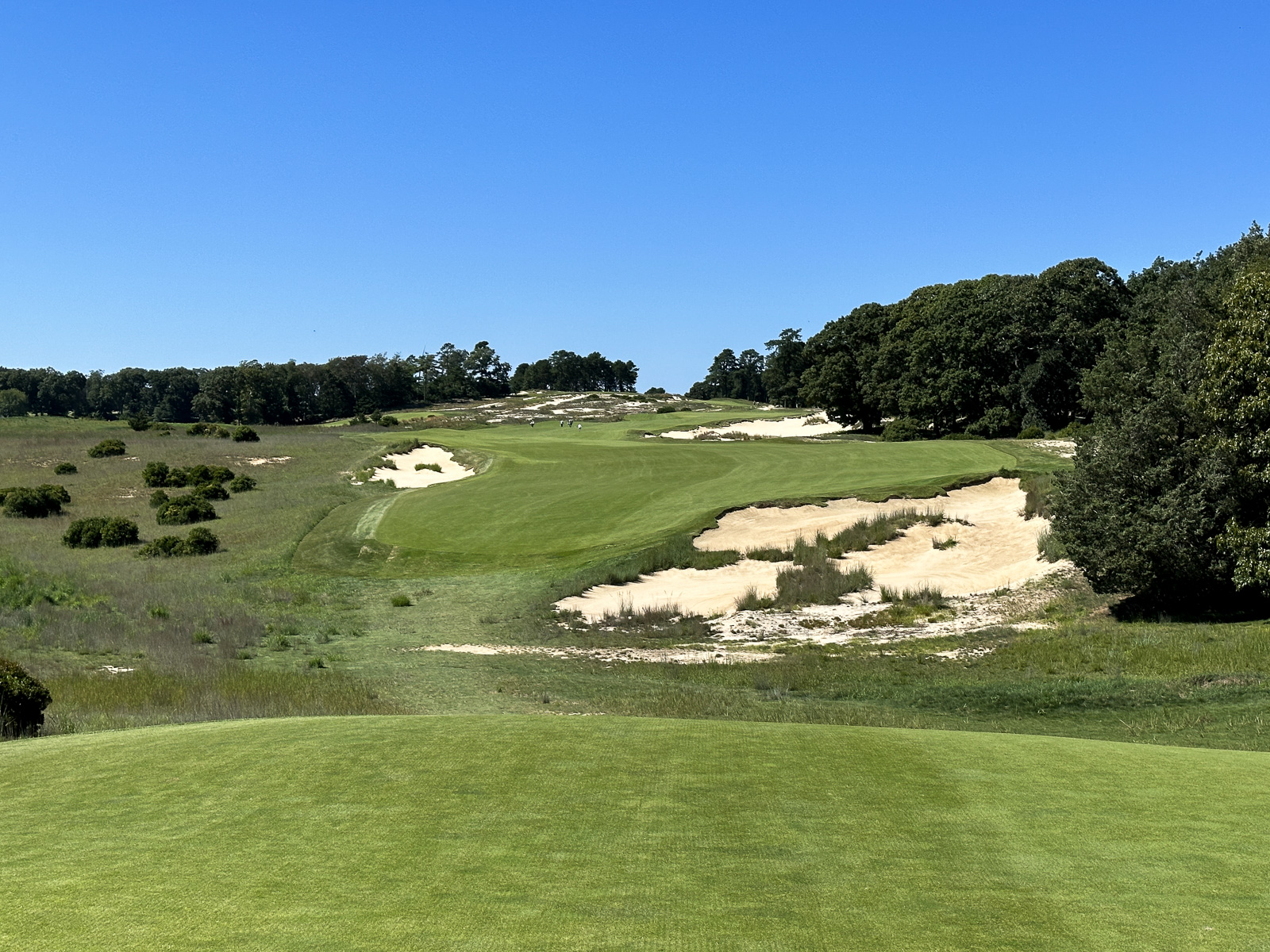
The greens on the course are among the best I’ve ever played in terms of variety and interest. The 7th is particularly interesting given how massive it is and with fairly severe contours and mounding.
The downhill 9th is arguably the signature hole (or at least the signature photo spot.)
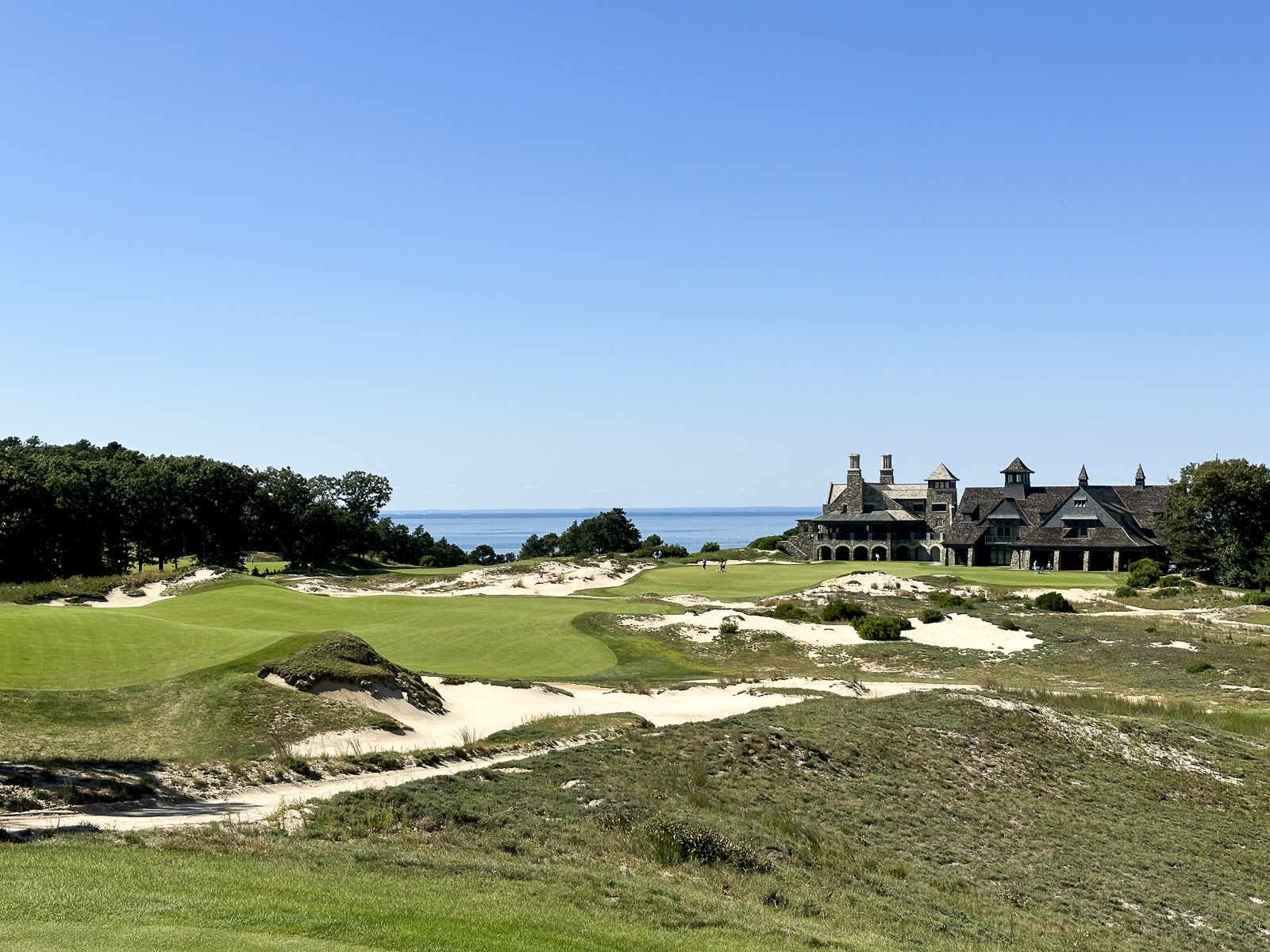
For years, the only photo I saw of the course was from 9 teebox looking back down at the clubhouse and over the sound.
It’s truly one of the best views in golf.
The Back 9 at Friar’s Head
The back 9 starts out with a long, 200-ish yard par 3. The signature here is the large mound that guards the left side of the green and feels more reminiscent of something built in Scotland 100 years ago.
The par 5s at Friar’s Head are cool in that they feel like they’re transporting you into different environments of the course.
2 takes you down into the meadow, then 7 is back up into the dunes.
11 brings you back down again, and then 14 takes you up into the dunes and is the beginning of a world-class finishing stretch of holes.
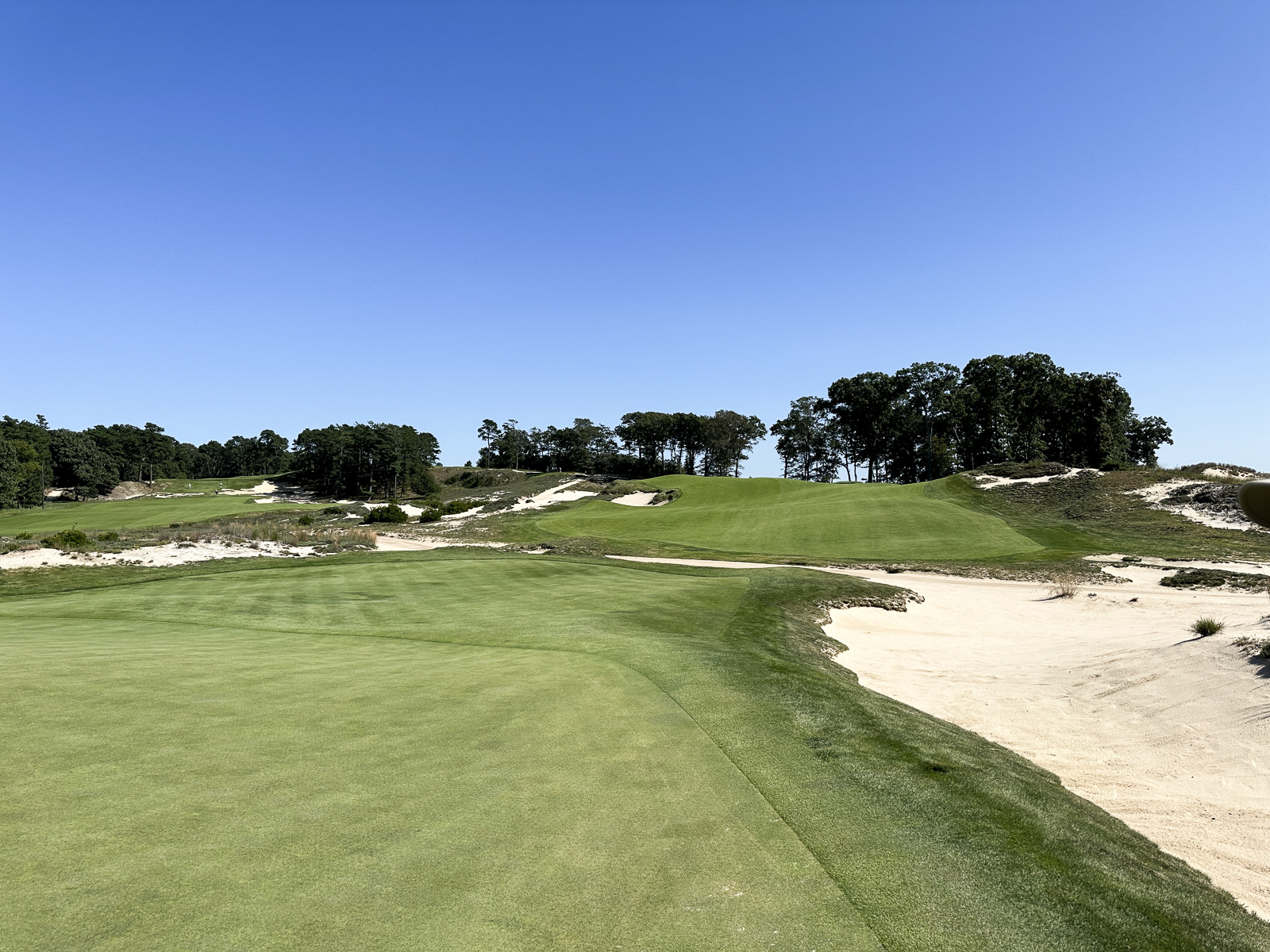
Seriously, the stretch of 14-18 is among the very best stretch of golf holes I’ve ever played.
14 is a risk-reward par 5 that has a little bit of everything.
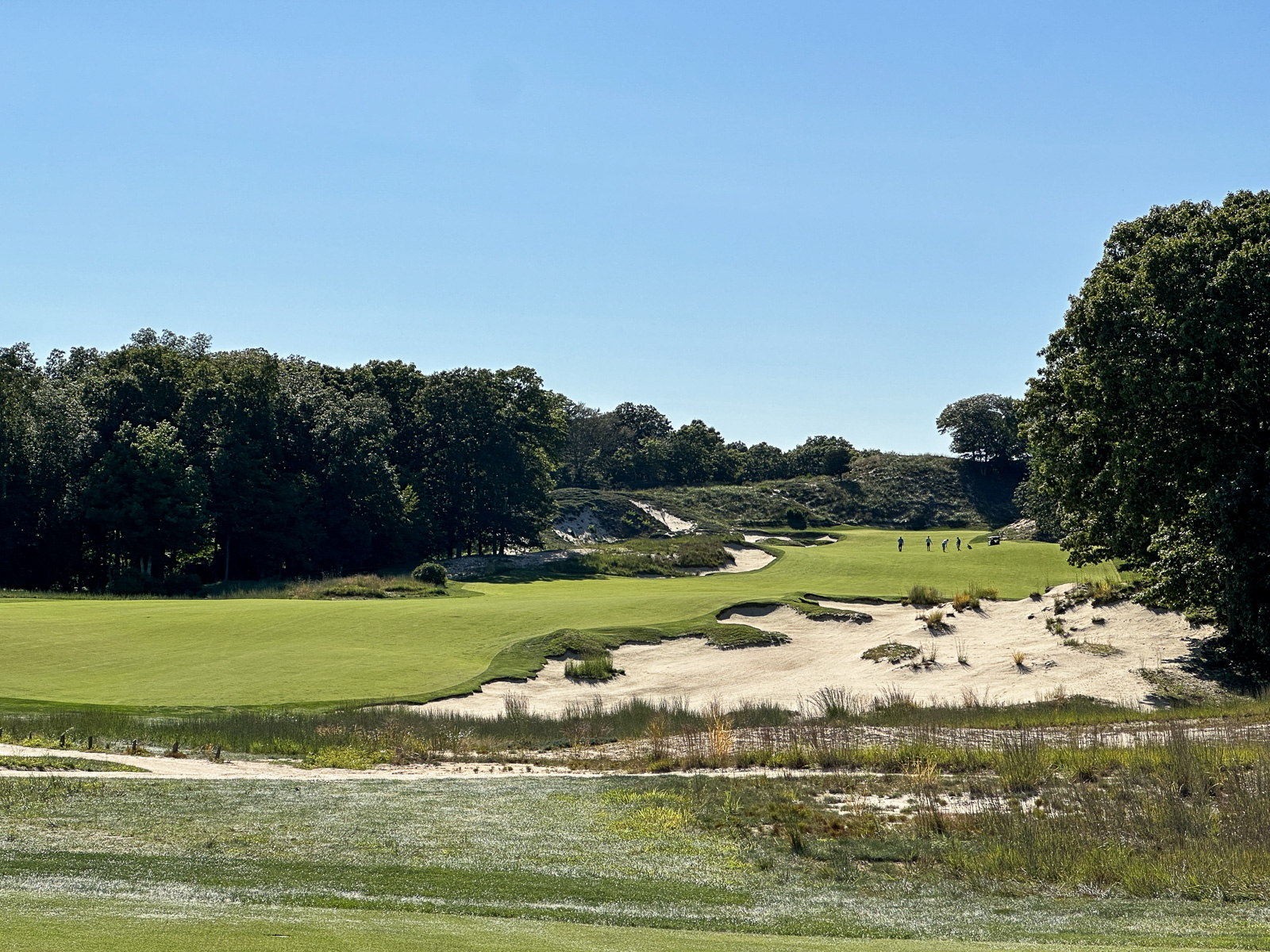
You can bail out left to stay safe from a massive bunker, but it makes the hole significantly longer.
The more of the bunker you take on, the shorter the hole gets, but your margin for error increases in step with the aggressiveness of your line.
The green is set in a natural amphitheater and has a bit of a false front to it.
Notice the stairs going up to the 15th teebox. The only better walk, is the one walking off the 15th.
15 is a downhill par 4 that heads straight out towards the Long Island Sound.
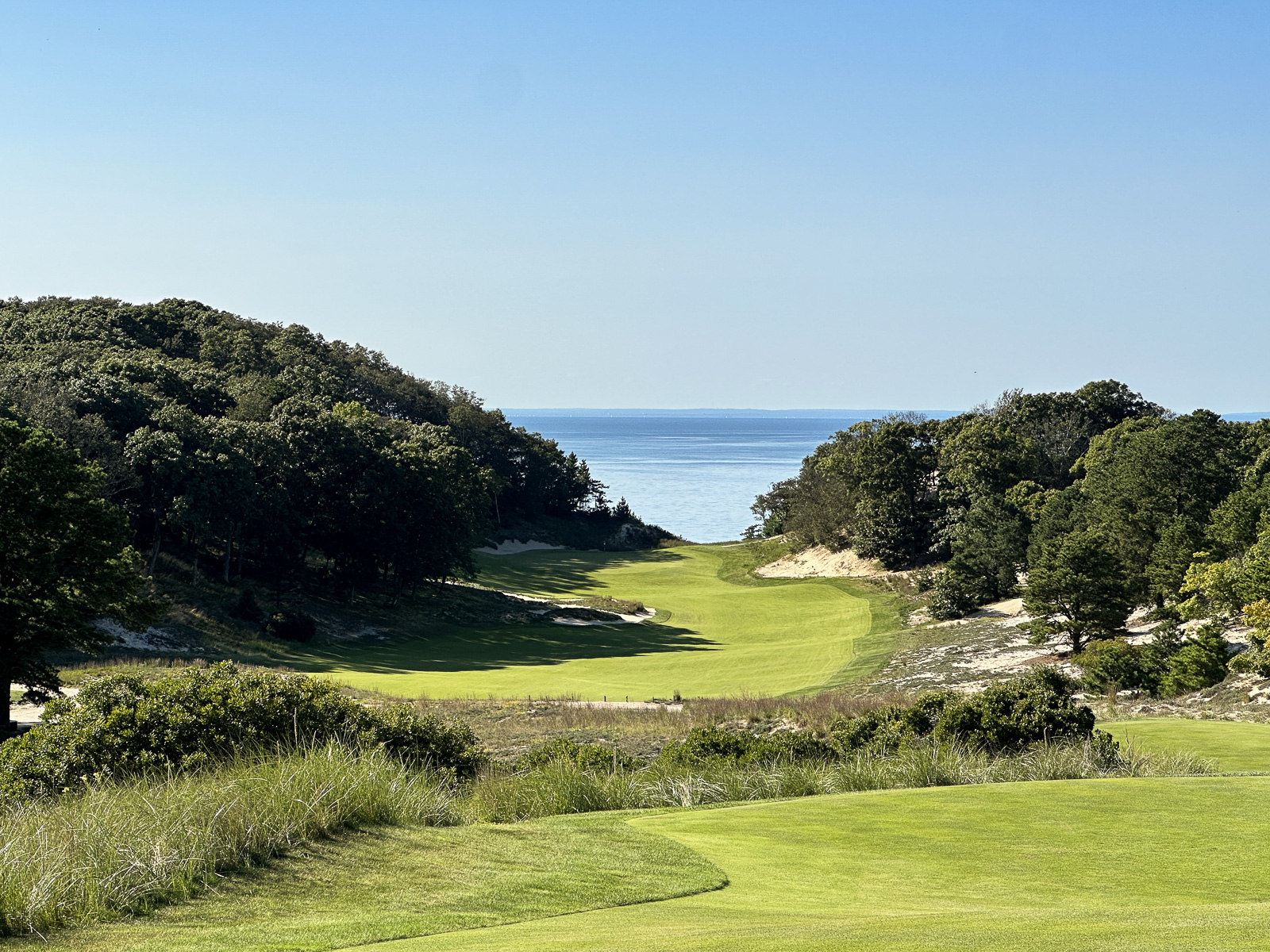
It’s another fantastic view. If you’re a better player than me and don’t pump it into the waste area right (exactly where you don’t want to be), it can be a chance to score as the green isn’t quite as intense as some others on the course.
But the most memorable moment of the round is the one that everyone had told me about, the bridge from 15 to 16.
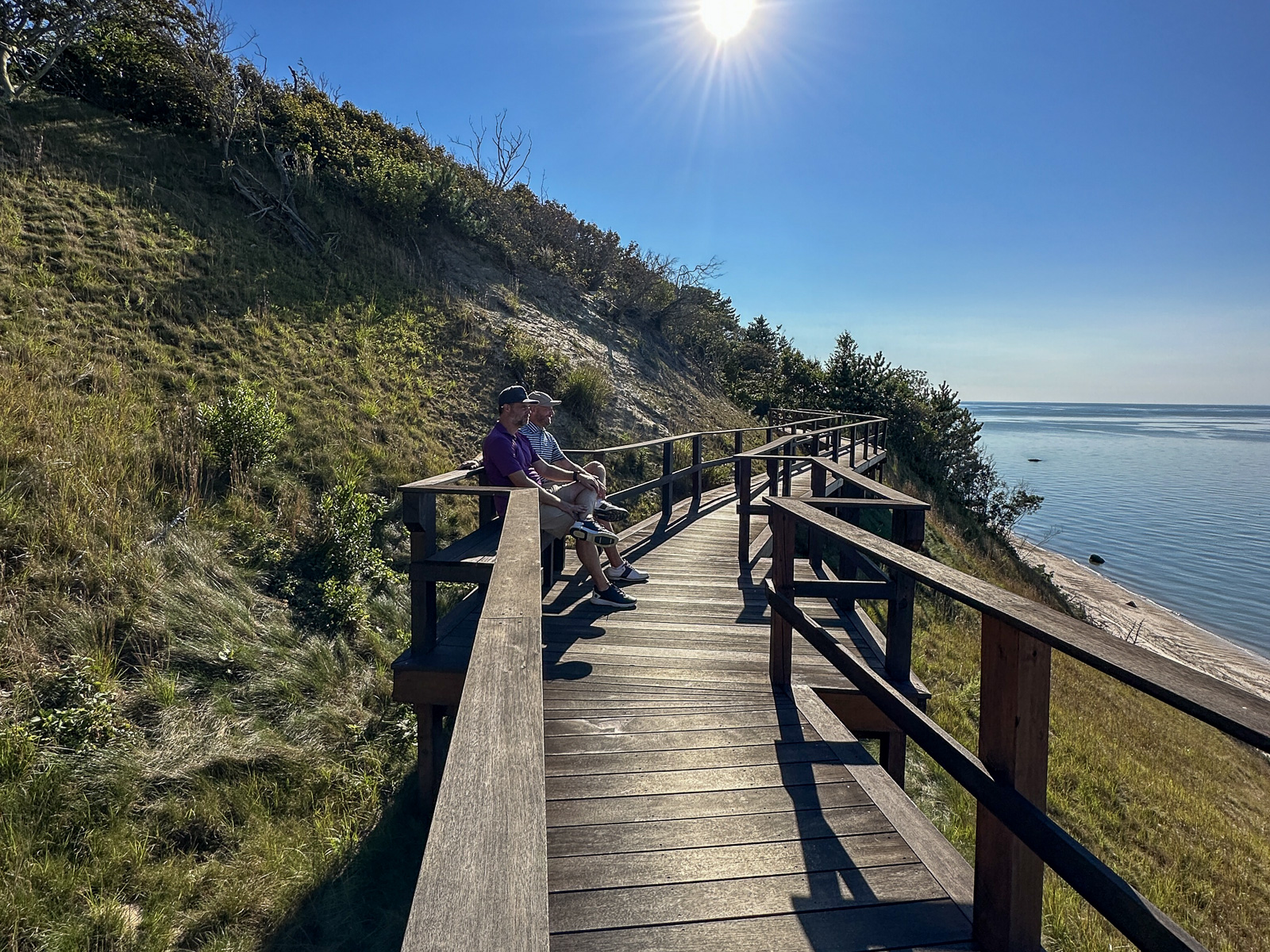
I haven’t played Cypress Point, but I imagine the walks to 15 and 16 elicit similar feelings to what you get walking to 16 at Friar’s Head.
16 is a fantastic par 4, that is deceptively difficult. This is one of those holes you need to play a few times to understand it. The obvious play is to go out to the right. But what you don’t realize is that if you’re short, you’re actually leaving yourself with a much longer shot than if you go over the ridge left.
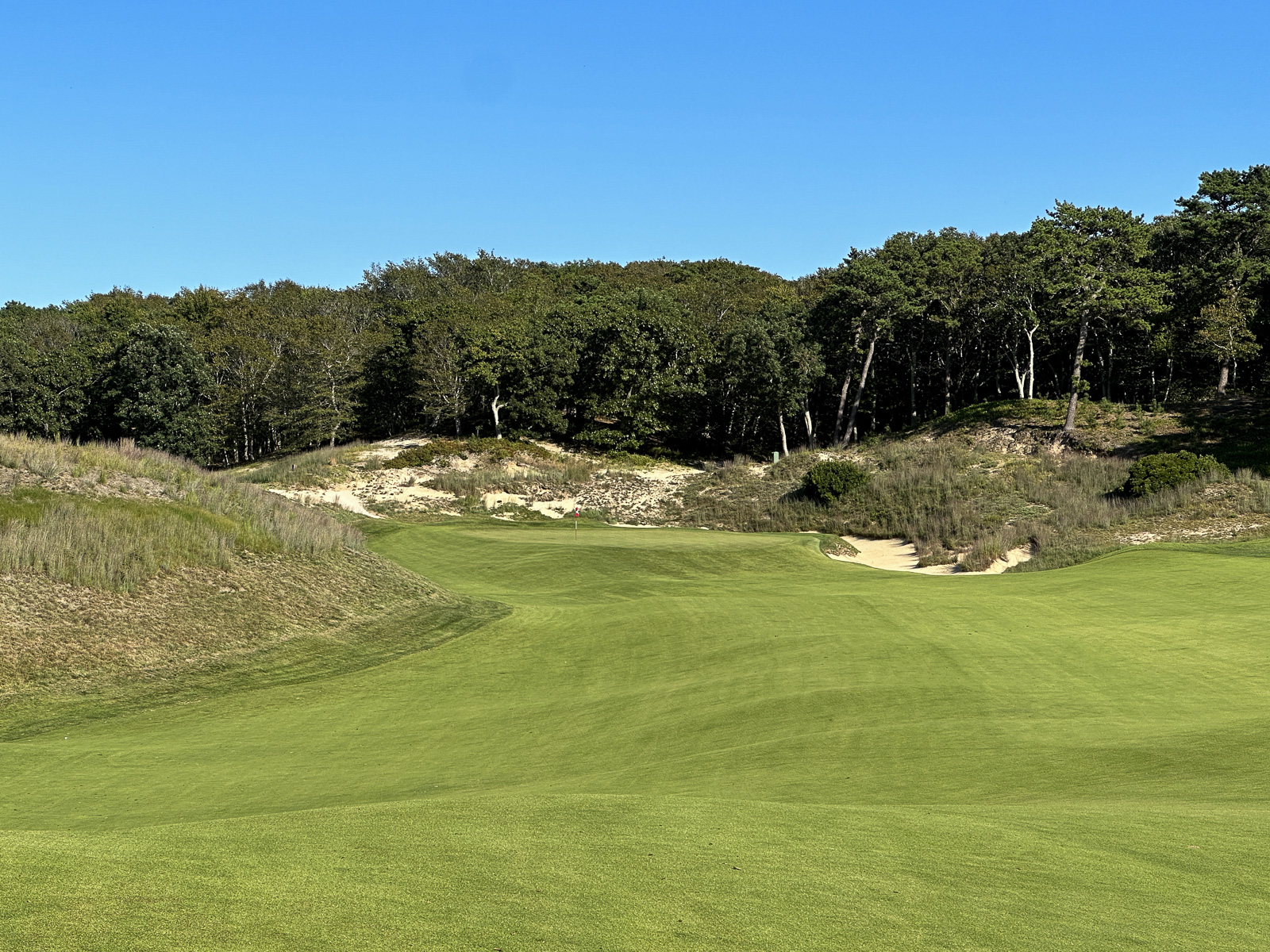
It’s hard not to get on the tee at 17 without thinking “how cool would it be to hit a hole-in-one here?”
It’s the last par 3, the shortest hole on the course. But despite appearing “easy” on paper, anything less than an ideally struck shot can end up in the waste bunker where bogey or worse quickly becomes the most likely outcome.

Finally, 18 is a challenging par 4 that requires two very well-struck shots in order to give yourself a fighting chance. I had one of my better drives of the day, and then hitting the green in front of the clubhouse and making an easy two-putt par was a great way to finish.
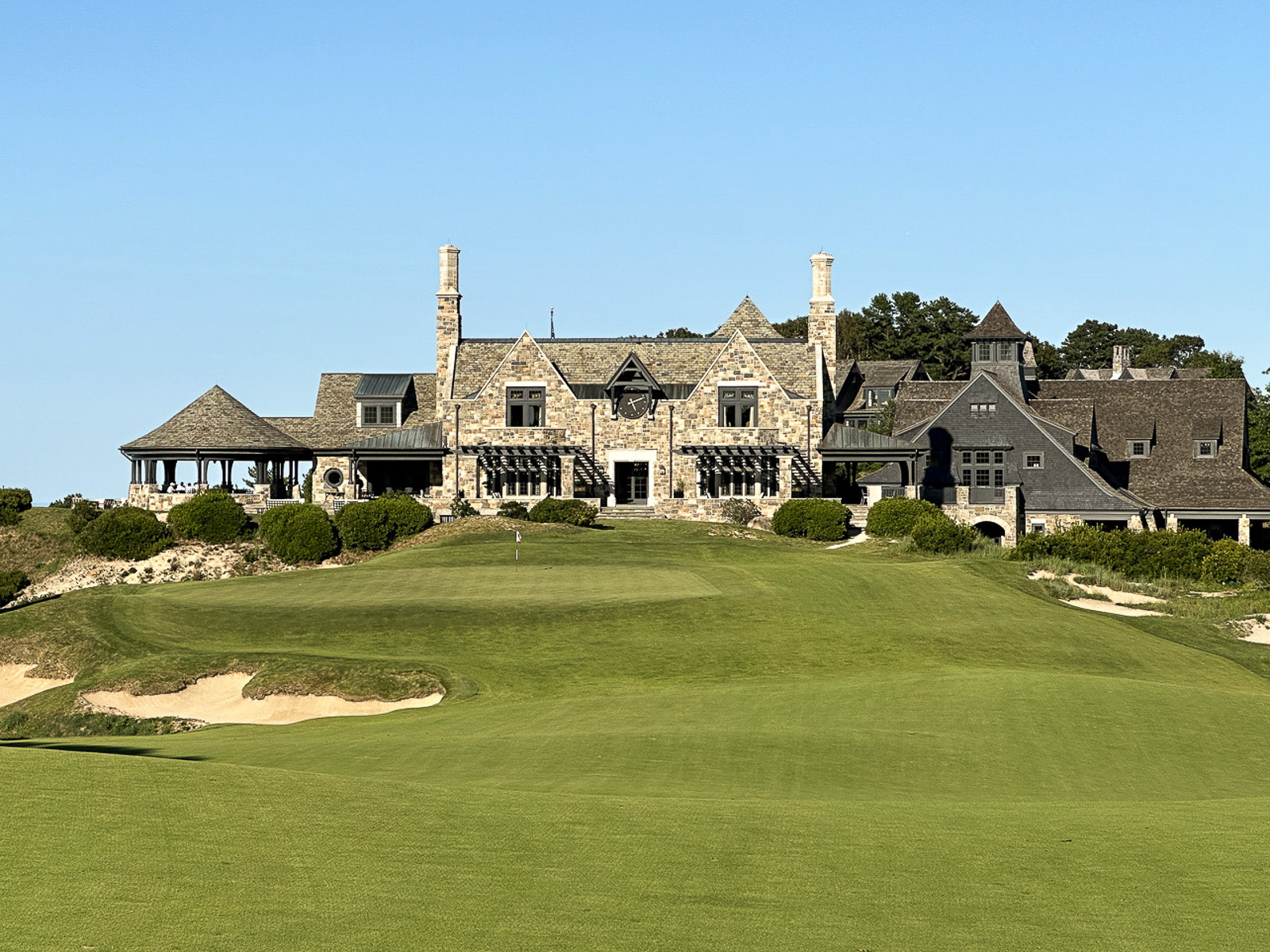
The Showers at Friar’s Head
No proper article about Friar’s Head would be complete without mentioning the showers.
The showers here are the only thing more legendary than the course itself.
For years I’ve always heard about Merion being the gold standard of golf showers – and to be clear, they’re very good.
But the showers at Friar’s Head? They blow them away. Literally.
This is the closest thing you’ll experience to getting blasted from a firehouse short of walking out of a burning building.
I’ve never experienced anything like it. If you visit, do whatever you can to experience this as it is truly the best shower in golf.
Final Thoughts on Friar’s Head
Awhile back I wrote about bucket list courses that actually exceed expectations.
Friar’s Head is the perfect example of this.
Yes, we had a spectacular day. Yes, the company was phenomenal. A lot was working in our favor.
But Friar’s Head is one of those courses you could play day in and day out and never get bored. There are so many nuances and interesting elements that you could play dozens of rounds and still find something new each time.
I’d like to think I’ll have the chance to visit Friar’s Head again in the future. But if I don’t? I’m incredibly thankful for the opportunity and for what immediately became one of the best golf days of my life.
The course is amazing. The setting and the experience is even better.

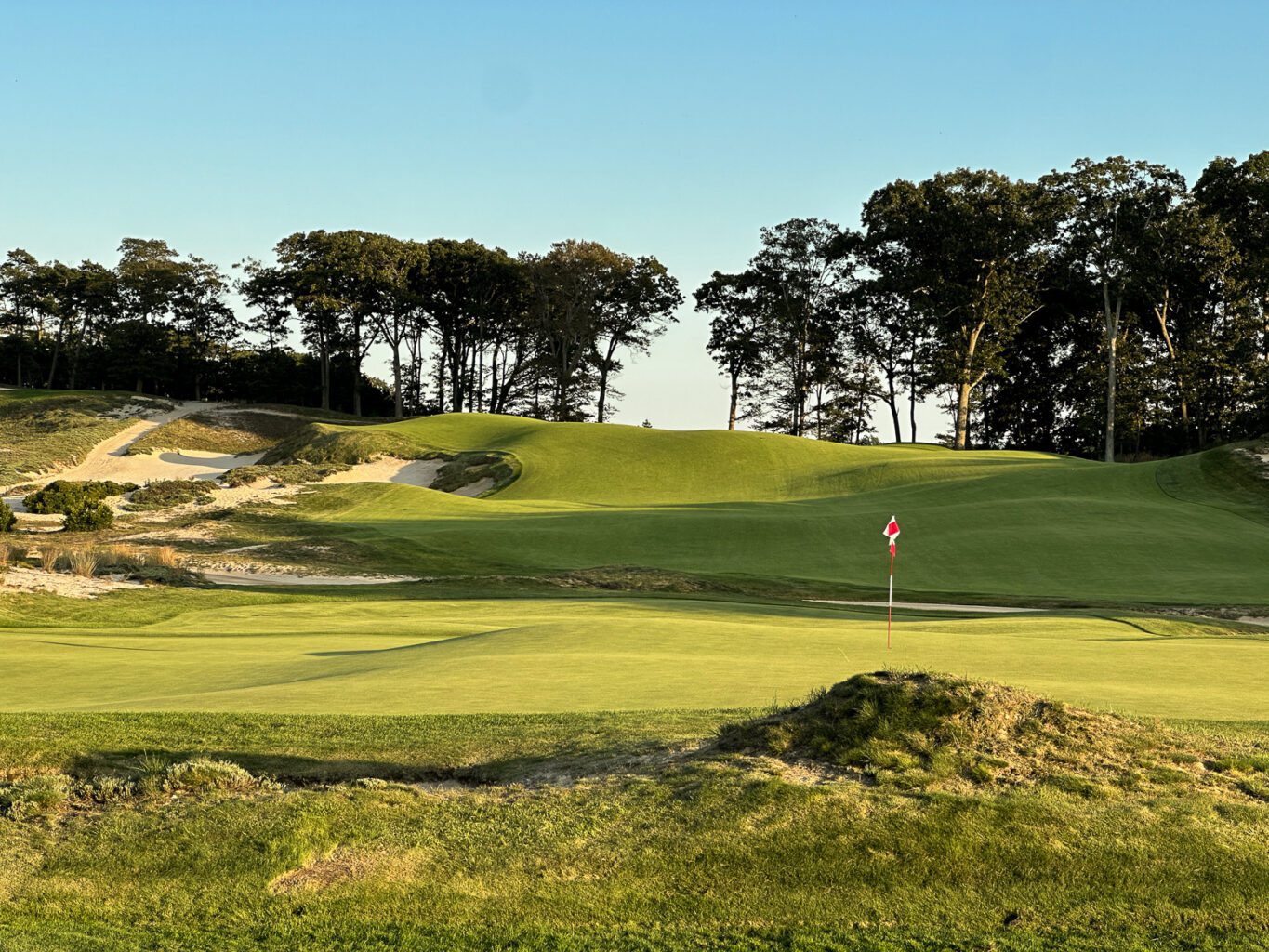
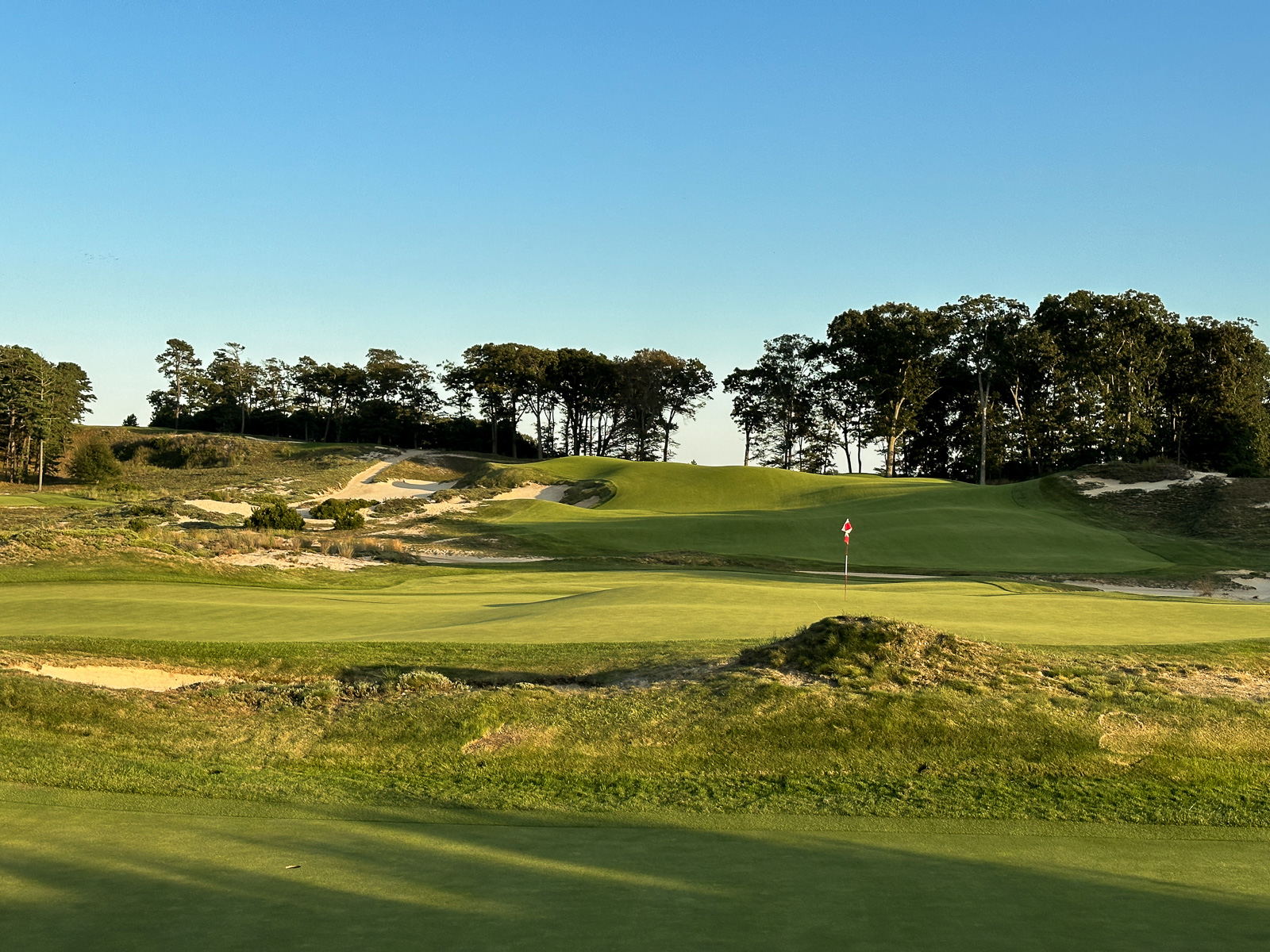
1 Comment
Dear Sean: I was the long time attorney for the Talmage family, the co-owners with Ken Bakst of Friar’s Head and the attorney for Friar’s Head in obtaining the municipal permitting for the construction of the course. I had walked the land often prior to it becoming a golf course. The first time I climbed to the 15th tee and looked out to see the fairway and green with the Long Island Sound in the background, I burst into tears, it was so beautiful. I have played most of the great courses in the Hamptons. I was a member of Southampton Golf Club, a hidden jewel designed by Seth Raynor. I now live in Naples, Florida. Two weeks ago, I walked Calusa Pines, the number 1 rated golf course in Florida. There were magnificent views, but nothing to compare to those found at Friar’s Head. I am pleased that you enjoyed our piece of landscape.
Since you love golf, Kinsdale Golf Course is being constructed across the street from my home. It is designed by Gil Hanse and Co. Bring a fat wallet. Membership is $500,000.